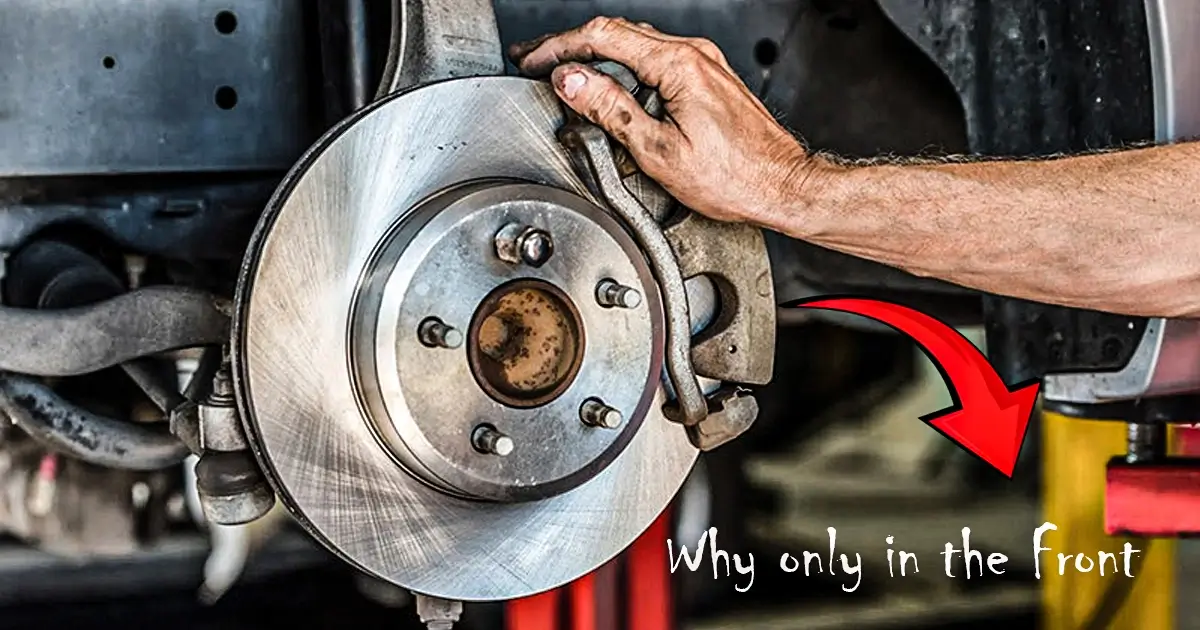If you have ever looked at your vehicle’s tires, you might have observed something strange: disc brakes above the front and vintage drum brakes in the rear. Initially, it seems like a quick way by the maker, or a method to reduce expenses at your price. However, the fact is more complex. There is genuine mechanics beneath it, and it possesses more to deal with natural laws and plan than frugality, even, yes, currency always performs a part too.
Front Brakes Do Most of the Work
While you strike on your halters, mass moves ahead. Imagine spilling liquid into a glass when you halt instantly, and it entirely flows to the leading side. The same occurs with your vehicle’s mass. Due to that onward plunge, the front brakes handle 60–80% of the deceleration burden. That is why automakers place disc brakes forward: they are stronger, release heat more efficiently, and manage frequent tough halts without weakening.
At the same time, the back tires hardly undergo that much braking pressure. They mainly assist in stabilizing elements and stop the vehicle from skidding. Drum brakes that are less costly and technically easier are “sufficient” back there for several cars, particularly tinier sedans or affordable versions.
Why Drums Still Stick Around in the Rear
You may believe, “If discs are highly effective, why not place them all around?” Here is where price, usefulness, and custom clash. Drum brakes are less costly to produce and simpler for carmakers to combine with hydraulic brakes. The technical emergency brake or digital brake mechanism is far easier when linked to barrels, due to the structure inherently securing the tire in place. Along with disc brakes, additional machinery, like a small drum or digital controller, is required to create a parking brake function.
Drums also possess a concealed benefit: they endure extended on the rear shaft. Because the back does not do a lot of braking, such drums can operate for 80,000–100,000 miles with little wear. For the majority of drivers, that causes them almost “lasting” components, something manufacturers know most purchasers will not object to.
Heat Management: Where Discs Shine
One of the primary distinctions between drums and discs is how they manage warmth. Whenever you brake, resistance changes power into warmth. In case the heat cannot exit, your brakes weaken, signifying they become softer the more you employ them. Discs are exposed in the clear, refreshed by the atmosphere, which is the reason powerful vehicles and Lorries built for large weights employ four-wheel rotor systems.
Drums, on the other hand, catch warmth within their sealed structure. This is not a large issue on the back shaft; due to it is not performing the massive work. But in case you place cylinders up front, where all the true activity occurs, you would sense it after only a few tough halts. That is the reason leading drums vanished decades ago in support of discs.
Automaker Logic: Balancing Cost and Perception
Vehicle firms think in terms of what customers want, not only what is mechanically finest. Over the years, front-disc/rear-drum systems achieved the proper equilibrium. They provided the majority of the protection advantages of discs at a cheaper price. To an ordinary driver, the halting force seems completely okay in regular practice.
However, as customer hopes changed thanks to advertising, security scores, and capability boasting claims, more vehicles began accepting four-wheel rotors. Compact SUVs and also some tiny sedans currently flaunt rear discs, not always due to they are required, but because purchasers regard them as a sign of excellence. Oddly, for most travelers, the variation in everyday traveling is minimal.
Also Read
- Nearly 30% of UK Drivers Believe Car Tax Should Be Based on Mileage — Survey
- Why Planes and Boats Escaped the Luxury Tax But Cars Didn’t
- Australia’s Headlight Confusion: Authorities Warn Drivers After Viral $250 Headlight Rule Goes Wild Online
- 2025 Hyundai Venue Facelift Launched in India – Full Details, Variants, and Price
- Royal Enfield Bullet 650 Unveiled at EICMA 2025: A Classic Legend Returns
When Rear Discs Really Matter
Therefore, do you really require rear discs? The response relies on in what way you steer plus what you drive. In case you pull large cargo, reside in the hills, or press your vehicle intensely, rear discs provide you with more steady halting and improved heat durability. For athletic driving, they enhance brake stability and control sensation.
However, if your lifestyle is urban traffic and the infrequent highway journey, back brakes shall function for you merely acceptably. You will probably change them once or two times in the whole lifespan of your vehicle, which is more affordable and less trouble compared to discs that need more regular maintenance.
The Myth of “Cutting Corners”
Here is the place I embrace a stance: I do not accept the concept that rear drums are a scam. They are a settlement, certainly, but one based in purpose, not idleness. Carmakers are not placing you in danger by skipping discs away from the rear shaft. They are offering you a setup that functions for 95% of motorists, while maintaining the cost of the vehicle reasonable.
Personally, I would choose four-wheel rotors mainly for the calmness of mind and the quicker reaction they give. But in case I am buying a cheap traveler’s vehicle, I will not refuse it only due to my noticing drums in the rear. It is like objecting that your budget compact does not have composite brakes, it is needless excess for what the vehicle is designed to execute.
